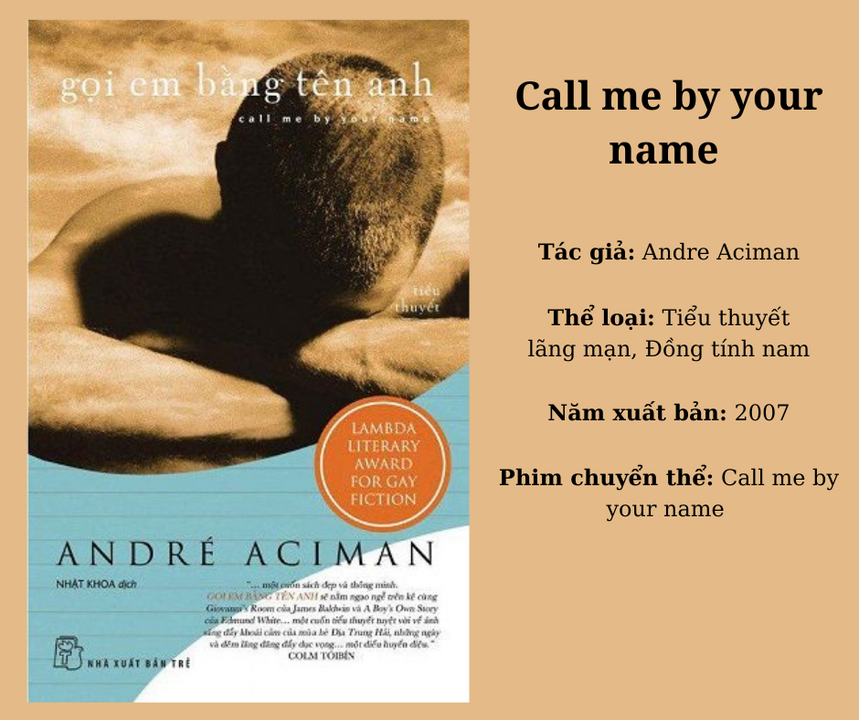Bản mẫu:Anchor
| Bản mẫu này sử dụng Lua: |
| Bản mẫu này được sử dụng trong thông báo hệ thống, và ở khoảng 13.000 trang. Thay đổi đến nó có thể dẫn đến thay đổi ngay lập tức giao diện người dùng Wikipedia. Để tránh gây lỗi trên quy mô lớn, tất cả thay đổi cần được thử nghiệm ở trang con /sandbox, /testcases của bản mẫu, hoặc ở không gian người dùng của bạn. Các thay đổi đã được thử nghiệm có thể thêm vào bản mẫu bằng một sửa đổi duy nhất. Xin hãy thảo luận các thay đổi tại trang thảo luận trước khi áp dụng sửa đổi. |
The template {{anchor}} inserts one or more invisible HTML fragment identifiers (anchor names) in a page. Those locations can then be linked to using [[#Location|...]] syntax (note that #Location here is not a browser instruction like #redirect—the word "Location" can be any word you wish to associate with any part of an article in which you decide to place the {{anchor}} template, and can be entirely arbitrary; also, the first letter of the location is usually capitalised to reflect the common capitalisation used in section headers—see for more on this style guideline).
Các ví dụ
[sửa mã nguồn]{{anchor|Foo}}
could be linked to with[[#Foo|...]]from within the same article (let's call this article "Qux"),
or it could be linked to with[[Qux#Foo|...]]from other articles and from redirects (where the ellipsis after the word "Foo" here means the words chosen to represent that link in the Wikipedia article, which, of course, could be anything).- Anchors can be more suitable for inter-article linking than section titles are because they are more stable. For example a section title
== Foo ==within a Wikipedia article titledQux:
=={{anchor|Foo}}Foo ==
Here, links via[[Qux#Foo]]would remain valid even if the section were renamed== {{anchor#Foo}} On foo and its many friends ==(note that the anchor is placed before the section name; otherwise browsers may hide the section title from view). - However, within section titles, it may be preferable to simply use direct HTML, which may be achieved by substitution like this:
=={{subst:Anchor|Foo}}Foo ==
This provides the same stable, linkable anchor, but also provides some additional visual advantages. For details, see § Limitations below. - The template can be used to create multiple anchors with a single call. For example,
{{anchor|Foo|Bar|baz}}
will create three anchors that can then be linked to with[[#Foo]],[[#Bar]]and[[#baz]]. - Here is a more literal example: say you wrote an article about a recently discovered Indo-European language called "Yish Yash". The title of your article would probably also be "Yish Yash" or perhaps "Yish Yash (language)" (if there were already an article titled "Yish Yash" that covered the culture generally). Let's say you chose "Yish Yash (language)". Now let's say that within your article you wished to have a section titled "The placement of the tongue when producing Yish Yash vowel sounds". You would create a section heading that looked like this:
== The placement of the tongue when producing Yish Yash vowel sounds ==
Let's say that you then finished up writing and saved the new article. Now, say you came across another article on Wikipedia titled "Proto-Indo-European vowels" which happened to have a section on the unique tongue placement used in Yish Yash. You decided it might be useful here for readers to be able to quickly access the section of your article on Yish Yash tongue placement when forming vowels; however, you don't want to send them to the beginning of the whole article on the Yish Yash language (you wanted to target them more specifically). So you create a link in the Proto-Indo European vowel article to the section within your article on the placement of the tongue in Yish Yash: you might do so by editing the text of the Proto-Indo-European vowel article and adding something like this to a relevant place within it:[[Yish Yash (language)#The placement of the tongue when producing Yish Yash vowel sounds|Yish Yash tongue placement]] is particularly interesting.
That is some really long code, but it would create a direct link to the relevant section of the new Yish Yash language article and would look like this in the article on Proto-Indo-European vowels:
"...Yish Yash tongue placement is particularly interesting..."
Now let's say another editor came along and wished to change the heading of this section of your article for some legitimate reason—perhaps to "Yish Yash vowels and the tongue". He or she could do so by editing your article and making the section heading look like this:== Yish Yash vowels and the tongue ==
Unbeknownst to that editor, this would mean the link in the article on Proto-Indo-European vowels that you created earlier would now go by default to the top of the Yish Yash article instead of your carefully-chosen subsection! However, if an anchor were placed within the section heading of the Yish Yash article either when you created it or when the other editor came along and changed it—perhaps something like this:== {{anchor|Tongue}} The placement of the tongue when producing Yish Yash vowel sounds ==
or like this:== {{anchor|Tongue}} Yish Yash vowel/ tongue interaction ==and the text of the article on Proto-Indo-European vowels had been changed by you to something like this:[[Yish Yash (language)#Tongue|Yish Yash tongue placement]] is particularly interesting.
then the link from the Proto-Indo-European article would continue to point to the relevant section of the Yish Yash article, even if the wording of the section heading there had changed completely and without the reader having to sort it out for themselves. The use of anchors can make for a cleaner, more efficient Wikipedia reading experience where section headings are changed... Which they not infrequently are.
Hạn chế
[sửa mã nguồn]| Ký tự | Mã | Bản mẫu | Định nghĩa |
|---|---|---|---|
| " | " "
|
— | (double) quotation mark |
| # | #
|
— | hash |
| | | |
|
{{!}} | pipe |
| = | =
|
{{=}} | equals |
- Anchor names that contain any character shown in the table on the right will not work as expected. However, any of these characters can be replaced with the "&#" codes shown for them here. Or, the pipe symbol and equals sign can be worked around with {{!}} and {{=}}, respectively. Markup code such as
<sup>and<sub>(superscript and subscript) cannot be used. Most other characters, including white space and punctuation, are not a problem. - Anchor names should be unique on a page, and should not duplicate any heading titles. Duplicate anchors will not work as expected since the
#locationlinks go to the first anchor with that name. Duplicate anchors result in invalid HTML; you can check for duplicate anchors by running the page through the W3C Markup Validation Service. - If the template is added to a section title then the code will appear in the edit summary window when that section is edited, as in "
/* {{anchor|Issues}}Limitations */ New issue". Also, when the section is saved, browsers may not return to the section. Consider substituting the template, resulting in<span id="..."></span>, when in a section title. - Anchor links are case sensitive in some browsers, so treat all anchor links as case sensitive.
Sử dụng trong các bảng
[sửa mã nguồn]Anchors may be used within tables, subject to certain restrictions. The {{anchor}} template may be used in the caption and cells of a table, but not those portions of a table that are outside the caption and cells. It is used on the table's caption thus:|+ {{anchor|FooX}} A table caption and the following forms of cell are valid:!{{anchor|Foo1}} A header cell !style="background:white;" |{{anchor|Foo2}} A header cell with styling |{{anchor|Foo3}} A data cell |rowspan=2 |{{anchor|Foo4}} A data cell spanning two rows You need to ensure that the {{anchor}} is not in that portion of the markup intended for the classes, styles etc. Thus, {{anchor}} cannot be placed anywhere on lines that begin with {| (start of table) or |- (new row), and the following forms of cell are not valid:!{{anchor|Foo1}} |A header cell !style="background:white;" {{anchor|Foo2}} |A header cell with styling |{{anchor|Foo3}} |A data cell |rowspan=2 {{anchor|Foo4}} |A data cell spanning two rows If it is necessary for an anchor to be in any of these positions, a different technique is used—the id= attribute. This is placed in that portion of the markup where the classes, styles etc. may be used, as follows:{| id=FooX class=wikitable |- id=FooY !id=Foo1 |A header cell !style="background:white;" id=Foo2 |A header cell with styling |id=Foo3 |A data cell |rowspan=2 id=Foo4 |A data cell spanning two rows The id= attribute may appear before, between or after any other attributes that may be present, but only one id= attribute may be used in each of these areas.
Dữ liệu bản mẫu
[sửa mã nguồn]Dữ liệu bản mẫu cho Anchor
The template {{anchor}} inserts one or more HTML anchors in a page. Those locations can then be linked to using [[#location|...]] syntax. The parameters labels shown here (e.g., 'First anchor', '1', and the rest) are provided for convenience; no parameter label is required in the template itself, so you may create an anchor within an article by typing {{anchor|go here}} or {{anchor|this is it}} rather than {{anchor|First anchor=go here}} or {{anchor|1=this is it}} (though both formats will work correctly). You may not use {{anchor}} all by itself, however, as this is like dropping a ship's anchor without tying a rope to it: it holds nothing in place, can't be found or used, and messes up the sea floor with garbage!
| Tham số | Miêu tả | Kiểu | Trạng thái | |
|---|---|---|---|---|
| First anchor | 1 | First anchor value; Only the first anchor is required. | Chuỗi dài | bắt buộc |
| Second anchor | 2 | Second anchor. | Chuỗi dài | tùy chọn |
| Third anchor | 3 | Third anchor. | Chuỗi dài | tùy chọn |
| 4th, 5th, ... anchor | 4 | For additional anchors, just add additional anchors (the template isn't limited to three) | Chuỗi dài | tùy chọn |
Xem thêm
[sửa mã nguồn]- {{Visible anchor}}
- {{Anchored list}}
- {{Anchor comment}}
- {{Shortcut}}
- WP:ANCHOR
- WP:TARGET
 GIẢM
11%
GIẢM
11%
![[Review Sách] Sống thực tế giữa đời thực dụng - Khi nỗ lực trở thành bản năng](https://down-tx-vn.img.susercontent.com/sg-11134201-7qve1-lj0r8adyezkf95.webp) GIẢM
10%
GIẢM
10%
![[Review sách] Tàn ngày để lại: Còn lại gì sau một quá khứ huy hoàng đã mất](https://down-tx-vn.img.susercontent.com/sg-11134201-7rdx5-lxqgdohyz3nse3.webp) GIẢM
27%
GIẢM
27%
 GIẢM
16%
GIẢM
16%
![[Review sách] Normal people - Sally Rooney](https://down-bs-vn.img.susercontent.com/sg-11134201-22090-edroebrkpwhvaf.webp) GIẢM
16%
GIẢM
16%
![[Tóm tắt sách] Vượt bẫy cảm xúc | Cẩm năng cân bằng hệ thống cảm xúc phức tạp trong mỗi người](https://down-bs-vn.img.susercontent.com/04f93085d98f4ae9b7a1a6eccef66513.webp)



